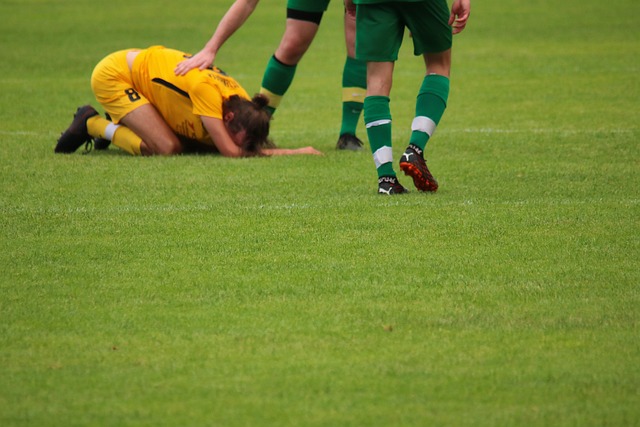Icy sidewalk falls pose significant risks and legal questions for pedestrians and property owners. While property owners have a duty to maintain safe premises, liability can shift in cases of third-party maintenance or individual negligence. Understanding these complexities is vital for assessing claims, whether through insurance negotiations or legal disputes. Insurance companies may deny claims due to reasonable precautions taken by property owners, pre-existing medical conditions, or unrelated factors. After a fall, prioritize safety, seek medical attention, document the incident, and consult with a personal injury lawyer. Even minor injuries should be evaluated professionally, as you may have grounds for legal action despite insurance denials.
“An icy sidewalk can turn a routine walk into a hazardous journey, leading to falls and potential injuries. When these accidents occur, understanding your legal rights regarding liability is crucial. This article delves into the complex world of icy sidewalk falls and insurance claims. We explore common scenarios where insurance companies deny responsibility, guiding you through the process of recognizing valid exceptions and knowing your rights. By the end, readers will be equipped to navigate post-fall procedures.”
- Understanding Icy Sidewalk Conditions and Legal Responsibilities
- When Insurance Denies Claims: Exploring Common Reasons and Exceptions
- Rights and Steps to Take After an Icy Sidewalk Fall and Denial of Compensation
Understanding Icy Sidewalk Conditions and Legal Responsibilities

Icy sidewalk falls can lead to serious injuries, making it crucial for both pedestrians and property owners to understand the conditions and legal responsibilities surrounding them. During winter months, frozen surfaces can become treacherous, especially when not properly maintained. Property owners have a legal obligation to ensure their premises are safe for visitors, which includes addressing icy sidewalks. This responsibility is often highlighted in local ordinances or lease agreements, emphasizing the importance of prompt clearance or treatment of ice and snow.
While some might assume that an icy sidewalk fall is solely the fault of the property owner, it’s essential to consider other factors. In cases where a third party, like a government entity, maintains the sidewalk, liability may shift. Additionally, if an individual’s negligence, such as not looking where they’re walking or wearing inappropriate footwear, contributes to the fall, it could impact their claim for compensation. Understanding these nuances is vital when navigating icy sidewalk fall claims, whether through discussions with insurance providers or considering legal options like those offered by a car accident lawyer in cases of defective products or contract disputes.
When Insurance Denies Claims: Exploring Common Reasons and Exceptions

When an insurance company denies a claim for an icy sidewalk fall, it’s crucial to understand the common reasons behind such decisions. One of the primary exceptions is when the property owner can prove they took reasonable precautions to prevent ice accumulation. This might include regular clearing of snow and ice or visible signage warning pedestrians of potential hazards.
Another factor that insurers consider is the timing and duration of the icy conditions. If the sidewalk was only briefly icy, it may be harder for a claimant to argue that the property owner had a duty to clear it promptly. Additionally, if there’s evidence suggesting that the fall resulted from a pre-existing medical condition or another external factor unrelated to the icy surface, insurers may deny the claim. It’s advisable for those affected by such denials to consult an accident attorney to explore their legal options, especially in cases of wrongful death or caregiver abuse stemming from icy sidewalk falls.
Rights and Steps to Take After an Icy Sidewalk Fall and Denial of Compensation

After a fall on an icy sidewalk, it’s crucial to understand your rights and the steps to take if insurance denies compensation. The first step is to ensure your safety and seek medical attention if needed. Documenting the incident by taking photos of the hazardous condition and noting the date, time, and location of the fall can be invaluable for any potential legal action. Additionally, file a report with local authorities or property owners to create an official record of the incident.
Consulting with a personal injury lawyer is advisable as they can guide you through the process, help gather evidence, and assess your case’s strength. It’s also important to keep detailed records of all communications related to the claim, including any denials or refusals by insurance companies. In some cases, especially if the fall was due to negligence, such as a property owner’s failure to clear ice, you might have grounds for legal action against the responsible party, even with an insurance denial. Even if you’ve experienced a seemingly minor injury, it’s recommended to consult a healthcare professional or caregiver, as some injuries may not be immediately apparent, especially in the context of a fall.
If you’ve suffered an icy sidewalk fall and your insurance claim has been denied, it’s crucial to understand your rights. By exploring common reasons for denial and taking the necessary steps, you can navigate this challenging situation effectively. Remember, understanding the legal responsibilities related to icy conditions and knowing your options are key to ensuring justice and compensation for your injuries.






